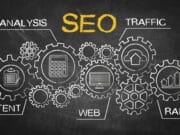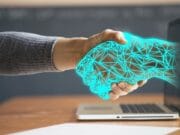Most novice web designers approach SEO awkwardly, like an alien from Area 51. Many of them also believe that web design and SEO are completely independent of each other. It is absolutely possible to find an SEO expert who solely focuses on onsite SEO like creating keywords, header tags, Meta tags and Meta descriptions, completely ignorant of the parameters of website designing. On the other hand, web designers are hardly even known to bother with SEO as their buck stops with optimized designs that meet the expectation of their clients.
Only recently has there been enough emphasis on the interdependence of SEO and web design. SEO is something imperceptible by the users of a website. But web design clearly has an effect on the user dynamics. A good, inspiration web design that connects to the customers significantly improves the SEO. To understand this better, let us first learn about the quirks and preferences of RankBrain.
Google’s RankBrain:
Google has come up with the uncountable number of updates and new algorithms in the last couple of years. RankBrain is the AI algorithm that Google launched in 2016. It can screen, weigh and understand keywords, their intended use, and context in an entire portion of content. This has allowed the Google search engine to transcend from a dry query result format to a question-answer format where RankBrain enables the search engine to “understand” what the user is asking for.

Google has gone all out to buy 11 companies between the period of 2011 and 2016 that specialize in artificial intelligence. One of its latest acquisitions is DeepMind in 2014 for an unbelievable $500 million. Using all available resources, the brilliant minds at Google created RankBrain that has now become the third ranking factor for Google’s search engine.
Will web design be viewed in a new light with the rise of A.I.?
At this moment, Google can only tell if a website has the information you are looking for. It can hardly tell if a site looks classy or trashy. The only way it can do so, is by analyzing user feedback. Now if the majority of the users have the style sense of Nicki Minaj and there’s nothing Google can do about it. Google judges web user opinions mostly by bounce rate of a website.
If your website has a fresh design that holds the attention of your target audience a bit longer, it will automatically generate more shares. Your visitors will be likely to stay on your website longer and spend more time navigating the sub-pages.

It takes less than 2 seconds for a user to decide if he likes a site or absolutely hates the design. AI resembles the cumulative decision-making process uncannily. RankBrain is very human-like in this aspect, the only difference being, this algorithm can exactly analyze 2000 odd factors to determine the rank of a particular website.
In very recent future Google will merge RankBrain with image recognition technology to blend SEO and web design beyond tangible parameters. Very soon Google will be able to tell a beautiful website from an ugly one “on its own”. Google won’t have to analyze user feedback and bounce rates to solve the mystery of the ugly websites.
What will be its direct impact on SEO?

Once the line between web design and SEO is blurred, it will indeed bring in a world of change in the ways search engine spiders interact with websites. Here are a few possible changes that 2017 will see in the domains of website ranking and user interactions:
- A good-looking website won’t have to wait long after going live for the necessary boost.
- ALT tags will optimize images and describe them much better. They will not be just about SEO anymore.
- Relevant, high-quality graphics will become a major ranking factor rather than ALT tags and Header tags that go with the website.
- It is likely that Google will introduce a penalty for using copyright images. Google image search will become more optimized.
- “Search by image” options can be used for shopping and will change the way people interact with eCommerce sites.
Google’s intentions for this year:
In 2016 we have already seen Google’s inclination for mobile optimized websites. By the end of 2017, Google intends to classify their search indexes into mobile users and desktop users. As we all know by now, mobile users superseded desktop users by early 2014. This is an indirect declaration of their preference for mobile optimization and native apps. They intend to measure user experience respectively for each device.
At present, over 50% of traffic on the top-ranked websites is from mobile users. This means, if your site is currently not visible to mobile users it is time to reconsider your game-plan.

Say goodbye to annoying pop-ups:
Pop-ups are the daily web user’s pet peeve. They are especially annoying when you are trying to use a crudely optimized site on your mobile device. As far as Google is concerned, all sites generating these pop-ups will be penalized after 10 January 2017. This will also be relevant for websites who sport “interstitials” in place of pop-ups. However, if your website uses these elements to display legal information, then you are safe from Google’s wrath. So if you are still using these pop-up request email forms for newsletters and offer subscriptions, then you might want to rethink your SEO strategy this year.
What does Google have a penchant for?

Google is capable of directly interacting with a number of parameters and factors on your website. While bounce rate and dwelling duration are two indirect measurements of your website’s popularity; the direct measurements include the use of high quality, original and relevant images and videos, site speed (slow sites are ranked lower on the SRL), and a user-friendly internal link structure.
Google’s hidden intention is to create a cornucopia of VR and AR ready websites. The preferences are slowly being driven towards 360-degree optimization, and A.I. algorithms like RankBrain are slowly guiding web designers, SEO experts, and users towards a futuristic web interaction experience.
This article is written by Emily Woods. She is the director of an SEO company Ranking by SEO that was first established in Chicago, US. Her company now has nine offices throughout the city and two more in the southern states of the country. She is an SEO expert who studies the interaction of website design elements with user feedback that determines the website rank and popularity.





